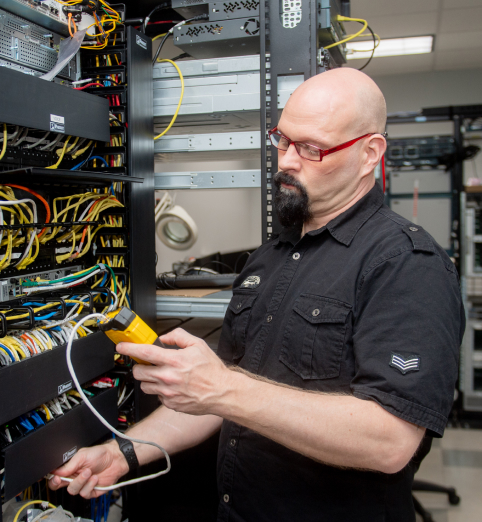When it comes to cable and telecom companies, I honestly don’t envy their business models. The need to continually evolve to meet the demands of consumers and businesses alike, borders on the near impossible. Yet, at every turn, they seem not only to meet the demands of the masses, but also to exceed them—to that end, I have much respect.
For instance, look at the evolution of internet speeds and how they have changed in the past few years. It wasn’t that long ago that dial-up was all one had: a collection of squeals and beeps that brought you to the then burgeoning land of promise that was the worldwide web. Just a few years later, we experienced cable for the first time, transforming the first stages of connectivity and enabling internet 2.0—the promise of the online world growing once again.
Now, of course, there is fiber directly to the house and office, enabling symmetric speeds once thought impossible. And with that comes the promise of the internet and all its wealth of knowledge—well, that and Instagram and Facebook where we get to see stupid memes and pictures of people’s cats … but hey, for some folks that’s something.
But, all joking aside, with so many hurdles to overcome regarding the physical nature of the internet, we sometimes forget the other side of the equation: the protocols that enable all this speed and subsequent data transfer to happen. And at the heart of this transfer for a very long time—and by long, remember we are measuring IT standards, let’s say 20 years—there has been Data Over Cable Service Interface Specification or DOCSIS for short.
Now, not to get all Wikipedia on you, but for the sake of time and sanity here’s a Wikipedia-esque definition to speed things along—pardon the pun. DOCSIS is an international telecommunications standard that permits the addition of high-bandwidth data transfer. Simply put, it makes the internet happen.
So, how important is DOCSIS? And how geeky can we possibly get? Very, and even more…well, very. As an established protocol, the importance of it is substantial. In fact, the Full Duplex DOCSIS® 3.1 enables what is referred to as symmetrical up/down capabilities: meaning the amount of data that can be uploaded to the internet is the same as what can be downloaded.
But how does that impact consumers, businesses, and ultimately cable and telecom infrastructure? Firstly, it enables consumers and businesses to have symmetrical upload and download speeds—think of the 150 up / 150 down ads from your local cable companies in your neighborhoods. And as for telecom companies, they now get to offer their customers better and faster speeds that align with the demands of everything from data growth to virtualization, and more.
So, like all great last pushes over the proverbial cliff throughout history, this issue is always about speed to react-and-rectify than it is about choice. Like the iPhone pushed the flip phone off the cliff, like the flat panel television was the demise of its predecessor, and like how Metallica killed Napster, data growth is forcing cable and telecom companies to suffer through the change of hardware at an accelerated rate.
But what is the ultimate fix? It’s already under way. As cable companies continue to evolve their physical infrastructure due to data demands, the continuous need for new gear will solidify the foundation of DOCSIS® 3.1 for now, and possibly for the next decade or more.
The more important point in all this is for cable and telecom companies to future-proof now. Getting the right IT business solutions in place that continue to support DOCSIS, such as new switches, etc., will prepare them for even bigger data demands not only now, but also in the future.
No one likes change. It’s hard, sometimes painful, and more than a little frustrating. But if it means we can all upload photos to Instagram and see cat pictures that much faster, then no one should argue … because that’s what the internet is about … right?


